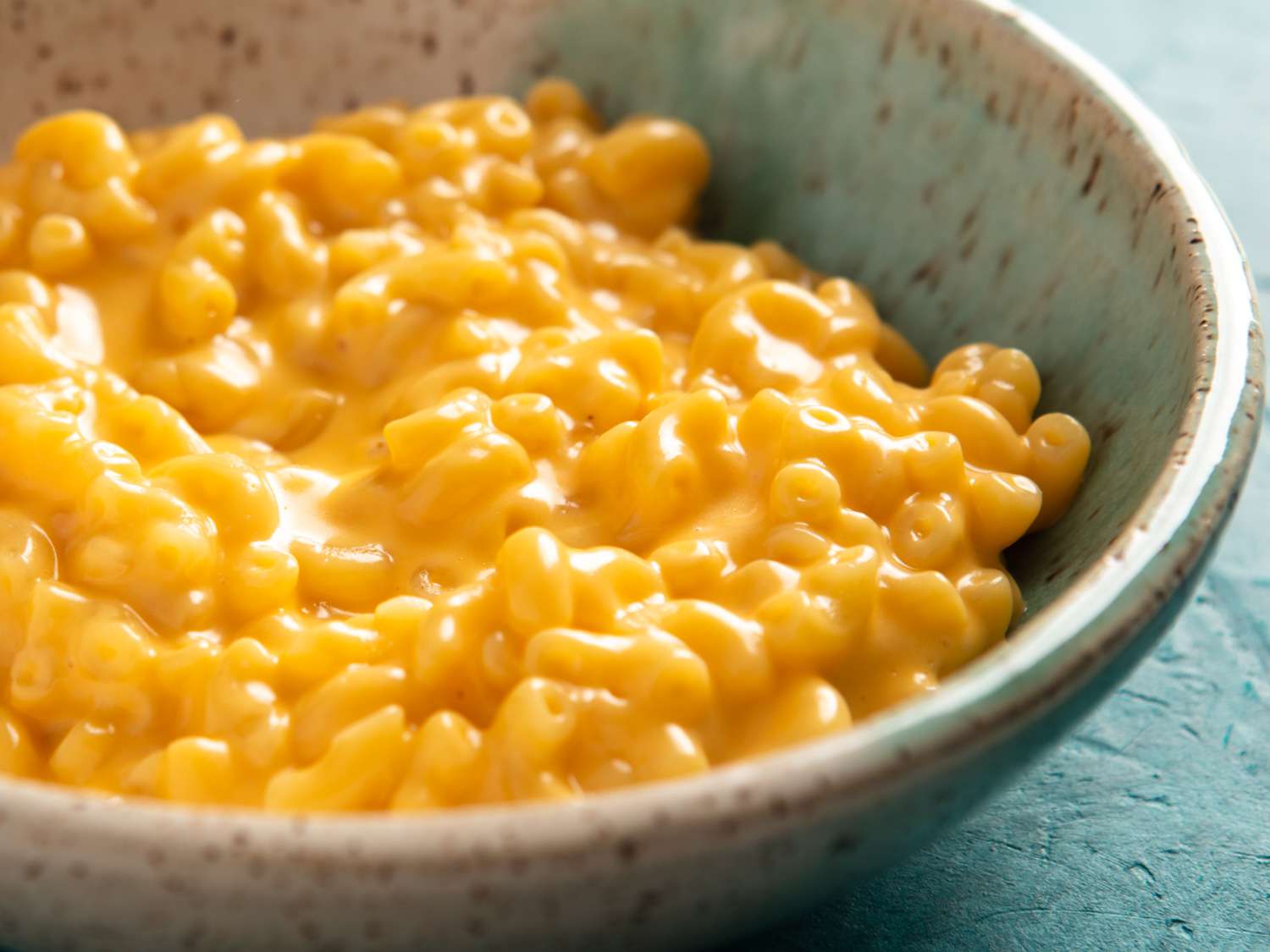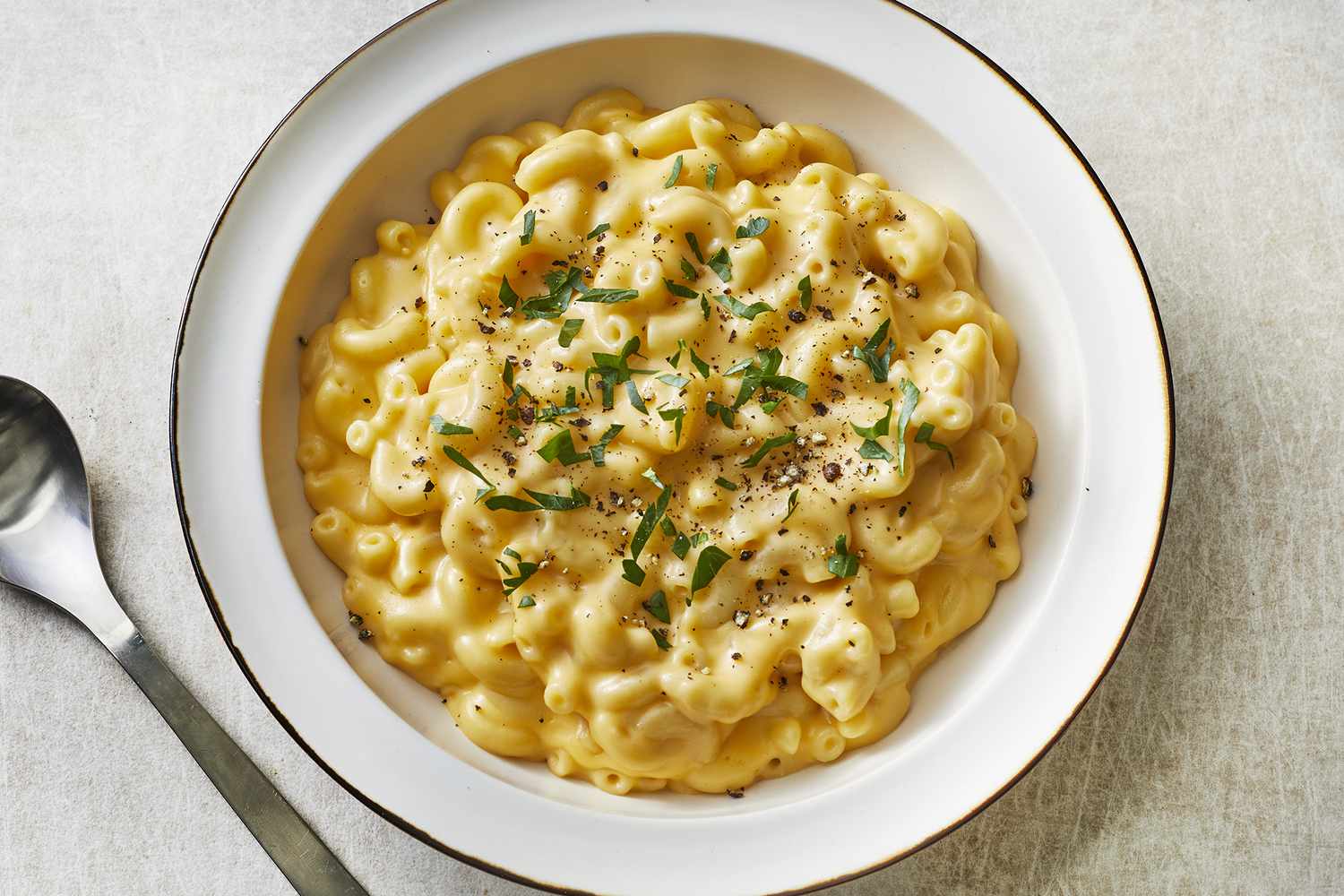Macaroni and Cheese is a classic American dish that countless generations have enjoyed. It’s a comforting, hearty meal that can be enjoyed alone or as a side dish. However, it can become oily, greasy, and yucky when incorrectly prepared. This article will explore why Macaroni and Cheese can be oily and how to prevent it.

As a cooking enthusiast, I constantly experiment with new recipes in the kitchen. However, my recent attempt at preparing my all-time favorite comfort food, Macaroni and Cheese, was a complete disaster. Despite following the recipe to the letter, the result was a disappointing mess of oily and greasy pasta instead of the classic, creamy meal I had anticipated.
My go-to recipe consisted of Macaroni, milk, butter, Cheese, and other ingredients. I trusted this recipe would produce the perfect balance of creamy and savory flavors, but I was utterly mistaken. Instead, the pasta was coated in a thick layer of oil and grease, which only served to overpower the taste of the Cheese.
Upon closer inspection, I realized that the culprit was the method used in preparing the dish. I had mistakenly used too much oil and butter and made the mistake of not draining the excess grease before adding Cheese. The result was a dish that was far from the creamy, cheesy goodness I had hoped for, but instead, it was an oily and unappetizing mess.
In hindsight, a simple error led to such a disastrous outcome. However, the mistake was a valuable lesson in the importance of precision in the kitchen. It also highlighted the complexity of cooking and the need to be mindful of every detail to ensure the perfect outcome.
Why is My Macaroni and Cheese Oily?
Your Macaroni and Cheese are oily because you overheat your Cheese, choose Cheese with a lower melting point, or let the sauce sit too long, causing the components to separate, leading to an oily or gritty texture and making it difficult to adjust the consistency.
The first reason Macaroni and Cheese can be oily is that the Cheese is overheated. When you heat Cheese, the fat separates from the solids and can cause the Cheese to become oily. It can be tempting to crank up the heat to melt the Cheese quickly, but this can lead to disaster. Instead, melt the Cheese slowly over low to medium heat, stirring constantly, until it’s fully melted. This will help prevent the fat from separating and keep your mac and Cheese from becoming oily.
To avoid overheating Cheese when preparing Macaroni and Cheese, you can follow these tips:
- Use low to medium heat: When making the cheese sauce, use low to medium heat and stir the Cheese constantly until it’s melted. Avoid high heat, as it can cause the Cheese to break down and become oily or grainy.
- Add Cheese gradually: Add the Cheese to the sauce gradually, a handful at a time, stirring constantly until each addition is completely melted and incorporated into the sauce. This ensures that the Cheese melts evenly and doesn’t overheat.
- Remove from heat: Once all the Cheese is melted and the sauce is smooth, remove it from the heat source immediately to prevent the Cheese from overheating and breaking down.
- Use Cheese with a higher melting point: As mentioned earlier, choose Cheese with a higher melting point, such as cheddar, Monterey Jack, or Colby, to ensure it can withstand higher temperatures without breaking down.
Another reason Macaroni and Cheese can be oily is that you chose the wrong Cheese. Some cheeses, like cheddar, have a high melting point, while others, like mozzarella, have a lower melting point. If you use Cheese with a high melting point, it might not melt properly and can become oily. On the other hand, using Cheese with a low melting point can become too runny and make your mac and Cheese watery. Choose a cheese with a medium melting point, like Gouda or Swiss, for the best results.
When making the sauce for Macaroni and Cheese, timing is everything. If you let the sauce sit too long after you’ve prepared it, it can begin to separate and become oily or gritty. To prevent this, use the sauce immediately after it’s finished. If you need to reheat it, do so over low heat, stirring constantly until heated. This will help prevent the sauce from separating and keep your mac and Cheese nice and creamy.

Finally, Macaroni and Cheese can be oily because the components haven’t been mixed properly. Mix the pasta and the sauce thoroughly so that all the pasta is coated evenly. If you don’t mix it well enough, you might end up with pockets of oil or Cheese that haven’t been adequately incorporated.
Here are some tips for adding Cheese gradually using grated, sliced, or diced Cheese when making Macaroni and Cheese:
- Grated Cheese: When using grated Cheese, add it to the sauce gradually, a handful, stirring constantly, until each addition is completely melted and incorporated into the sauce. This ensures that the Cheese melts evenly and doesn’t overheat.
- Sliced or diced Cheese: If using sliced or diced Cheese, start by melting the butter in a saucepan over low heat. Once the butter is melted, add the Cheese gradually, one slice or cube at a time, stirring constantly until the Cheese is melted and incorporated into the sauce before adding the next slice or cube. This will ensure that the Cheese melts evenly and doesn’t clump together.
- Use room-temperature Cheese: To help the Cheese melt more evenly and prevent it from overheating, let it come to room temperature before adding it to the sauce.
- Use a whisk: When adding the Cheese to the sauce, stir constantly with a whisk. This will help break up any cheese clumps and ensure it melts evenly into the sauce.
Avoid Cheese with a lower melting point.
When making macaroni and Cheese, it is essential to avoid Cheese with a lower melting point because the Cheese can separate and become oily or grainy when heated, ruining the texture of the dish.
Cheese with a lower melting point, such as mozzarella, ricotta, or feta cheese, tends to break down and separate when exposed to high heat, resulting in a grainy or greasy texture that can negatively affect the flavor and appearance of the Macaroni and Cheese.
Conversely, Cheese with a higher melting point, such as cheddar, Monterey Jack, or Colby, has a more stable structure and can withstand higher temperatures without breaking down, resulting in a smooth and creamy texture that is ideal for Macaroni and Cheese.
Therefore, choosing Cheese with a higher melting point when making Macaroni and Cheese is essential to ensure a delicious and consistent result.
Macaroni and Cheese Recipe
Macaroni and Cheese Ingredients:
- 1 pound dried short pasta, such as Macaroni
- 1 1/2 cups whole or 2% milk divided
- Two tablespoons of all-purpose flour
- 2 to 3 cups shredded Cheese, such as cheddar, Monterey Jack, or Colby
- One teaspoon of kosher salt
- 1/4 teaspoon powdered mustard
- Optional extras (cook before adding): ham, cooked bacon, onions, peas, mushrooms, peppers, broccoli, cauliflower
Macaroni and Cheese cooking Instructions:
- Cook the pasta in a large pot of boiling salted water until al dente, following the package instructions. Drain the pasta in a colander or strainer and set aside.
- Whisk together 1 cup of milk and two tablespoons of flour in the same pot until smooth. Cook over medium heat, stirring constantly, until the mixture thickens, about 2-3 minutes.
- Slowly pour in the remaining 1/2 cup of milk, whisking constantly to prevent lumps from forming. Cook and whisk until the sauce is thick and smooth, about 5-7 minutes.
- Add the shredded Cheese, one handful at a time, stirring constantly until the Cheese is melted and the sauce is smooth. Next, stir in 1 teaspoon of kosher salt and 1/4 teaspoon of powdered mustard.
- Add any optional extras, if desired, and stir until heated through.
- Add the cooked pasta to the pot and stir until the pasta is evenly coated with the cheese sauce.
- Serve the macaroni and Cheese in a large bowl. Enjoy!
Conclusion
Macaroni and Cheese is a staple American dish that everyone can enjoy. However, it can become oily, greasy, and yucky when incorrectly prepared. Following these tips and tricks ensures that your mac and Cheese is always perfectly creamy and delicious. Remember, choose the cheese e, melt it slowly over low heat, use the sauce immediately, and mix everything thoroughly. Then, with a bit sometimes, you can make the perfect mac and Cheese every time.
- How Many Tablespoons is One Clove of Garlic? - June 26, 2024
- How to Measure 3/4 Cup When You Don’t Have the Right Measuring Cup? - June 6, 2024
- How Much Does Cooked Pasta Weight Compare To Dry? - April 30, 2024
